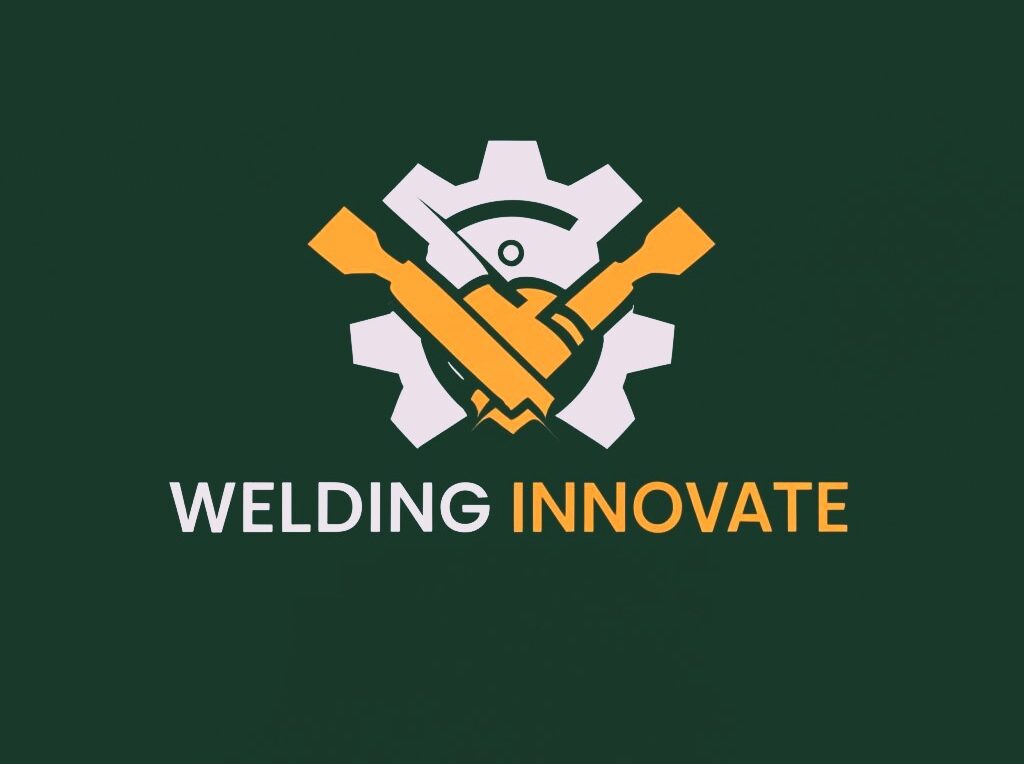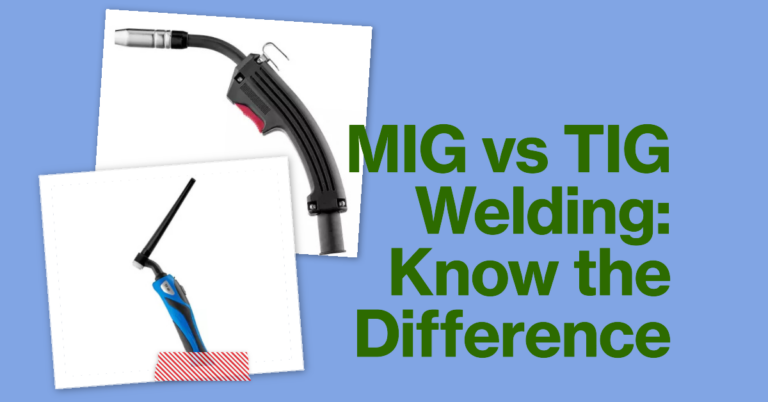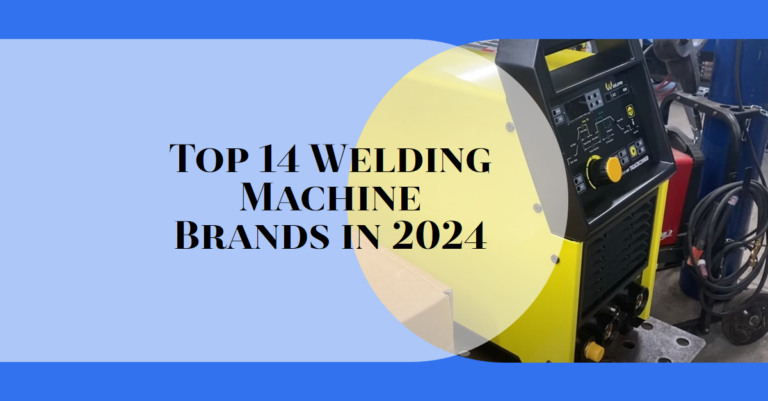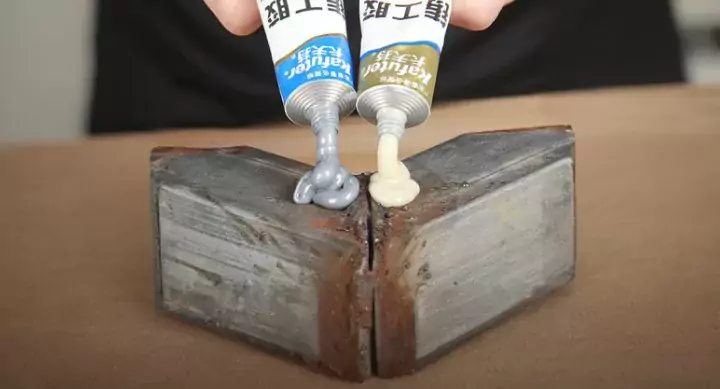Welding wire is a metal filament supplied in coils, spools, reels or individual rods (rods).
It is used as an additive for welding operations in manual (MMA, TIG), automatic (SAW) or semi-automatic (MIG, MAG) mode in shielding gases, as well as for cutting (CUT) steels, non-ferrous metals.
When melted during welding, it fills the weld pool, which after crystallization forms a seam roll.
APPLICATION
The peculiarity of the wire is that during welding works it simultaneously performs the functions of an electrode and filler material.
From the power source, through the slip tip, the voltage is transferred to the wire, forming an electric arc between the end of the additive and the workpiece. The metal melts, creating a weld pool and forming a weld.
The wire fed from the spool creates long, continuous welds, reducing consumable replacement costs and increasing welding productivity.
It can be used to weld the smallest and thinnest parts of steel structures with low thermal impact on the elements to be joined.
CLASSIFICATION
Welding wires are qualified according to different characteristics, depending on the tasks performed, composition and characteristics.
BY APPLICATION
On the modern market there are general purpose and special purpose wires.
- General-purpose consumables are used for the production of electrodes, for arc welding by automatic and inverter-semiautomatic arc welding, surfacing of all types of steel during repair.
- Special wire is used for welding in special conditions (for example, at high altitude, in water and under water), forced seam formation, joining alloys:
- aluminum;
- copper;
- cast iron;
- nickel;
- titanium.
To improve the quality of welds and prevent intergranular corrosion, various modifying additives may be added to the metal.
General and special purpose wires should have the same composition as the products to be welded.
STRUCTURE
There are three main types:
- Solid.
It consists of a cold-rolled metal core of continuous cross-section made of steel, copper or aluminum, titanium and other alloys. It is used for the manufacture of electrode rods or as filler material for automatic or semi-automatic (mechanized) welding in shielding gases (nitrogen, argon, carbon dioxide, etc.) or under a layer of flux.
- Cored (self-shielded)
It is a thin tube filled with flux or its mixture with metal powders, ferroalloys, oxides. The flux in the welding wire protects the weld pool and performs the same function as the electrode coating. It is suitable for both industrial production work and for welding at home.

- Activated.
Like cored wire, this wire has a tubular shape, but in its composition contains only 5-7% of flux.
Inside the tube there is a rod of compressed powder, which performs the role of a wick. The metal base is made of low-carbon steel Св-08Г2С. Activated additives are evenly distributed in the composite coating.
Oxides of silicon, titanium, magnesium, carbonates of alkali metals are used as activators. They give fast ignition and stable arc burning, without metal splashing, followed by easy separation of slag crust.

1 – rod, 2 – composite coating, 3 – metal matrix, 4 – flux, 5 – internal metal coating, 6 – external metal coating.
BY THE AMOUNT OF ALLOYING ELEMENTS
The main alloying elements include chromium, nickel, manganese, molybdenum, silicon, tungsten and refractory tungsten alloys.
Technical and operational properties of wire depend entirely on the percentage of alloying elements in it:
- up to 2.5% – low alloyed;
- from 2.5% to 10% – medium alloyed;
- more than 10% – high-alloyed.
Niobium can be used as an alloying element. When it is combined with 20% copper, high-strength alloys are formed, with aluminum (a hundredth of niobium is enough) – it makes the alloy immune to alkali, with steels – it makes them resistant to oxidation.
Additives for alloying allow to increase corrosion resistance, impact toughness, heat resistance.
BY DIAMETER
According to GOST, the wire has 17 standard diameters, from 0.3 to 12 mm. The size of the consumables is selected based on the thickness of the workpiece to be welded. The thicker the metal, the larger the value of the wire diameter.
Smaller diameter wire provides optimal welding technology: fast ignition, more stable arc burning and less spattering of metal.
When working with larger wire diameters, the amperage parameters should be increased.
SURFACE TYPE
Welding wire is divided into copper-coated, labeled with the letter “O” and non-coppered, uncoated. The properties of the welded metal depend on the surface condition of the wire. Non-copperized wire refers to general purpose consumables, used for welding, surfacing, electrode manufacturing.
Copperizing allows to:
- reduce metal spattering by approximately 40%;
- reduce the effort of pushing the wire through the feed mechanism;
- increase the anti-corrosion properties of the consumable.
Due to the low contact resistance, which provides a large current carrying capacity, copper-coated wire promotes rapid ignition and stable arc burning, minimizing the volume of spatter. It creates less harmful impurities in the resulting weld.

BY TYPE OF METALS TO BE WELDED
Different consumables are used for different metals and alloys. The characteristics of the weld sections depend on them.
- Carbon steel
Copper-coated wire and flux-cored filler wire are better suited for welding steel products:
- ER70S-6 – This is likely equivalent to ER70S-6, as you mentioned.
- ER70S-3 – This may be equivalent to ER70S-3, a low-alloy solid wire for welding low-alloy steels.
- ER70S-2 – This could be equivalent to ER70S-2, a solid carbon steel wire for gas shielded arc welding.
- ER70S-6 – This may be equivalent to ER70S-6, similar to the first wire mentioned.
- ER317L or ER316L – This appears to be a stainless steel filler wire, likely equivalent to ER317L or ER316L, depending on the exact composition.
The filler materials should be selected based on the requirements to the weld seam.
- Aluminum
Aluminum welding is performed using wire from pure aluminum or its alloys with magnesium, manganese, silicon.
The most suitable grades are:
- ER5356 or ER5556 – for welding heat-resistant alloys of high plasticity;
- ER4043 – for welding parts with special requirements to the quality of the weld;
- ER1100; ER5183; ER5554 – for joining pure aluminum and plastic alloys.
All the listed grades are characterized by resistance to chemical and atmospheric influences.
- Stainless steel
Welding of austenitic and stainless steels is carried out in a protective gas environment.
The main brands of additives for stainless steel:
ER347 or ER347Si, ER320LR, ER309, ER308, ER308L – welding of corrosion-resistant heat-resistant steels;
In the material of wire for stainless steel there is carbon, preventing intergranular corrosion, and silicon – to increase the strength of the weld.
- Copper
Since copper and its alloys when melting begin to actively interact with air oxygen, negatively affecting the quality of welding, work should be performed in an inert environment of argon or helium. When working should be used copper-nickel or copper-silicon wire.
Esab brand consumables are optimally suited for welding copper products: OK Autrod 12.64 OK Autrod 19.12, OK Autrod 19.30. OK Autrod 19.40, OK PRO 51C.
- Cast iron and nickel
The most suitable grades for welding cast iron and nickel products are SV08G2, SV08G2S as well as cored wires:
- PP ANCH-1 – for cold boiling;
- PP ANCH-1 – for semi-hot method, with heating up to 350 °C;
- PP ANCH-3 – for hot method, with heating up to 600 °C.
Welding of cast iron should be carried out by semiautomatic machines on direct current of reverse polarity.
TYPES OF WIRE BY COMPOSITION
According to the composition of the welding wire is steel, aluminum, copper-plated, powdered, etc.
Each type of wire is designed for a specific job.
STEEL
The most common type of wire used in construction, utilities, engineering, power generation, etc. It is used for joining, surfacing or cutting under flux and in various gases of low-carbon, medium-, low- and high-alloy steels.
Includes more than 50 grades. The most popular of them are:
- Sv-08, Sv-10G2, Sv-YUGL – for welding of structures from low-carbon steels;
- Sv-08GS, Sv-08G2S, Sv-18XS – for low-alloy and medium-alloy steels;
When adding chromium, nickel and manganese as alloying additives, it is possible to use the material for joining products made of high-carbon stainless steel.
ALUMINIUM
Designed for semi-automatic welding of aluminum and its alloys with magnesium, silicon, copper, chromium.
Contributes to the creation of welded joints characterized by increased strength and resistance to corrosion. The color of the resulting weld corresponds to the color of the workpiece.
Aluminum welding wire is widely used in automotive, shipbuilding and other areas where the metal often interacts with water.
COPPER-COATED
It is made from low-alloy and low-carbon steels.
The material has improved conductivity, low contact resistance, high corrosion resistance. Pros:
- environmental safety due to minimal impurities;
- insignificant spattering of weld metal;
- increased labor productivity due to high speed of wire feeding.
This wire is in demand for high requirements to the quality of the weld. The consumable is ideal for argon-arc welding. It can be used in the manufacture of tanks and pipelines, production of sea and river vessels, automobiles and railroad cars.
Since the wire does not contain any components to protect the weld pool, welding is performed in carbon dioxide or a mixture of argon and carbon dioxide.
POWDER
A tubular self-shielded wire filled with a flux cored filler that acts as a flux and replaces the gas.
Its flux additive content ranges from 14 to 40%.
Since the powder acts as a protection against contact with the atmosphere, it is not necessary to use gaseous substances.
Tubular wire is well suited for working at height and in other cases where it is not possible to bring a gas cylinder to the place of welding.
An example of such wire is brand PP2DS. Allows welding semiautomatic stainless steel (austenitic-ferritic steels), galvanized iron, components made of carbon steels.
The wire should be as closely as possible repeat the composition of the metals to be joined.

FLOW RATE OF CARBON DIOXIDE OR MIXTURE
Shielding gases prevent oxygen from entering the welding zone, which helps to improve the quality of connections and increase the productivity of work.
Their (or the gas mixture’s) consumption level depends on the characteristics of the metal being welded, the amperage and the filler wire diameter.
Approximate consumption parameters for semi-automatic welding are presented in Table 1.
Table 1. Specific consumption of carbon dioxide or its mixture.
| Wire diameter, mm | Current range, A | Gas flow rate | |
| M3/s-10⁴ | l/min | ||
| 0,8 | 60-120 | 1,33-1,5 | 8-9 |
| 1,0 | 60-160 | 1,33-1,5 | 8-9 |
| 1,2 | 100-250 | 1,5-2,0 | 9-12 |
| 1,4 | 120-320 | 2,0-2,5 | 12-15 |
| 1,6 | 240-260 | 2,3-2,5 | 14-15 |
| 1,6 | 260-380 | 2,5-3,0 | 15-18 |
| 2,0 | 240-280 | 2,5-3,0 | 15-18 |
| 2,0 | 280-450 | 3,0-3,33 | 18-20 |
As the amperage increases, the consumption rates of the gas substance also increase.
Its consumption is influenced by the speed and conditions of welding: its consumption will be higher when welding in a draught or outdoors, especially in windy conditions. Experienced welders will perform the work faster and more accurately, with significant savings in consumables.
MARKING
The marking encodes the main characteristics of the wire, including the purpose of the product, composition.
- product diameter;
- the purpose of the wire:
- Sv – means welding;
- Np – means cladding;
- PP – flux cored.
- carbon content in %;
- additive content,
including:
- D – manganese;
- D – copper;
- M – molybdenum;
- H – nickel;
- C – silicon;
- T – titanium;
- Z – zirconium;
- F – vanadium;
- U – aluminum.
The numerical values in the deciphering indicate the percentage content in the total mass.
Then the method of wire manufacturing is indicated:
- VI – melted in a vacuum induction furnace;
- VD – vacuum-arc remelting;
- SH – slag remelting.
The letter E indicates that the material is suitable for the manufacture of electrodes.
O – indicates copperized wire.
Designation A or AA indicates purity from harmful impurities (sulfur and phosphorus).
- 2 – the figure indicates the diameter of the product in mm;
- Sv – wire for welding;
- 30% carbon from the total mass of the material;
- Х25 – chromium 25%;
- H16 – nickel 16%;
- G – manganese 7%;
- W – made of steel smelted by electroslag remelting.
The name of additives, the content of which in the product is less than 1% in the labeling is not indicated.

SELECTION OF WELDING WIRE
Before choosing consumables, you need to study the composition of the workpieces.
Welding wire must meet the following requirements:
- the diameter of the additive is selected based on the thickness of the metal being welded;
- the nature of the wire metal should match the composition of the workpieces as much as possible;
- filler elements must not contain traces of rust, oxides, oil, paint and other contaminants;
- the melting point of the wire should be slightly lower or equal to the melting point of the base metal.
The cross-section of the wire should be round and uniform along its entire length. Winding – in even rows, without loops or bends.
Improper choice of additive can lead to porous and brittle welds.
Automated or semi-automatic welding with wire additive will provide a strong, reliable weld.
The type of consumable should be selected to match the base metal as closely as possible.
CONTROL OF WIRE FILLER CONSUMPTION
When welding with the use of welding wire, the welder does not change the electrode as in the manual mode, and the consumable is continuously fed into the working area by an automatic mechanism.
The following factors influence the wire consumption:
- technical characteristics of the semiautomatic machine;
- thickness and chemical composition of the metal to be welded;
- wire diameter and quality.
The wire feed rate is adjusted using the mechanical regulator of the semiautomatic machine at each cassette change.
Special meters are used to control the additive consumption. They can be automatic – built into the software of the welding machine or mechanical, on the wire cassettes.
Counters of multifunctional machines can not only monitor the amount of wire used, but also calculate its optimal consumption, taking into account losses.
MECHANISMS AND FEED SPEED
The feeding mechanism can be integrated into the semi-automatic welding machine or completely autonomous.
The device consists of an electric drive, a gearbox, pressure and feed rollers, a braking device. The wire cassettes can be placed inside or outside the housing.
The feeding mechanism may be:
- pushing;
- pulling;
- combined.
The wire feeding speed depends on the motor speed, gear ratio and diameter of rollers.
The wire is guided by rotating rollers into the burner, where voltage is applied. An electric arc is created between the wire tip and the metal to be welded, which melts and fills the weld pool.
WELDING FORMS
Welding wire is available in spools, coils, metal cassettes or plastic spools (coils).
The weight of metal spools in a package is usually between 12 and 30 kg.
Plastic spools usually weigh between 1 and 5 kg, less frequently up to 20 kg.
When choosing welding wire, the outer diameter and weight of the spool should be taken into account, as small machines fit cassettes with a diameter of up to 200 mm and a weight of up to 5 kg.
For large machines, both small and large spools are suitable.
With substantial welding volumes, it is advisable to choose large spools that do not require frequent replacement of consumables.
PROTECTIVE EQUIPMENT
Welding operations using wire require maximum protection for the welder. The list of protective equipment includes such items as:
- self-protective goggles, face shields or chameleon masks; the latter are more comfortable because they contain light filters that provide variable dimming depending on the brightness of the arc;
- cuffs or special gloves;
- overalls – overalls, jacket or overalls with insulation in cold weather;
- boots or boots;
- a tool such as an electrode holder.




![Body Panel Adhesive VS Welding [Guide & Suggestions] Body Panel Adhesive VS Welding [Guide & Suggestions]](https://welding-world-awards.com/wp-content/uploads/2023/12/60db234c-1db6-460e-9ea5-eaeffc77f0ed-768x576.jpg)

